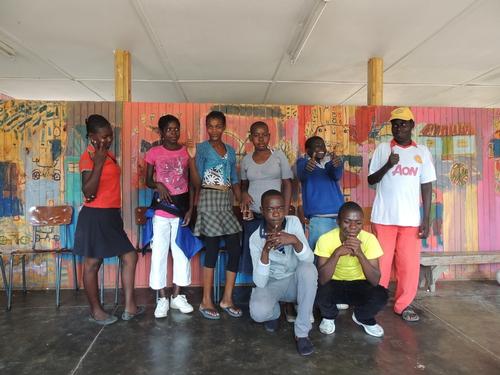Vancouver - Médecins Sans Frontières (MSF) warned today that not enough is being done to ensure people on antiretroviral treatment (ART) reach and maintain ‘undetectable’ levels of virus in their blood. Reversing the epidemic and achieving the UNAIDS 90/90/90 goals [1] will require much broader use of strategies to help people stay on track with their treatment, including adherence counselling, alongside routine viral load testing to make sure people’s treatment is working.
“Our experience to date on one hand is positive, with people who adhere to treatment living longer and healthier lives, but on the other hand, we see major gaps in the continuum of care that painfully illustrate the shortcomings of the HIV response,” said Dr. Helen Bygrave, HIV Medical Advisor for MSF’s South Africa Medical Unit. “The job is not over when you start someone on treatment - you need to regularly check to see if their treatment is working, and intervene quickly with counselling to help address any adherence problems. We talk about losing people through the cascade of care, but for some groups, the reality is a more like a cliff, and these gaps represent the clay feet of today’s mammoth - yet still inadequate - global HIV response.”
Particularly vulnerable groups include pregnant women, people with a detectable viral load, and children, whose rate of treatment failure is almost double that of adults. But viral load monitoring combined with effective adherence counselling works. In Zimbabwe, for example, among people on ART, 86% achieved viral suppression, and of those with an initial high viral load almost half achieved viral suppression after an adherence intervention and support.
Ensuring that human resources are available to provide enhanced adherence counselling and tailored adherence interventions for vulnerable groups is crucial to achieving the goal of 90% viral suppression for all people on ART. Sub-Saharan Africa has the double challenge of addressing both high HIV and high TB burdens with the lowest number of health care workers. In an MSF report being released at the Vancouver conference, HIV TB counselling: who is doing the job?, MSF reviewed lay counsellor policies and practices in eight countries in the region and found highly variable job profiles, deployment, and training of lay counsellors. In addition, four out of the eight countries were 100% reliant on donor funding for lay counsellors programmes and five countries had not yet begun the process of adding these essential workers to the health care workers rolls.
“Without formal recognition and sustained support for lay counsellors, we cut our chances of ramping up testing, linking people to care, and helping people stay adherent on ART; without good adherence to ART, we will never decrease HIV transmission nor keep people healthy,” said Amanda Banda, HIV Advocacy Coordinator for MSF in Southern Africa.
Adherence counselling works best alongside viral load monitoring, the gold standard for ensuring that people’s treatment is working and that they are maintaining the desired ‘undetectable’ level of HIV, which is best for their own health and also reduces the likelihood of HIV transmission to close to zero.
MSF data being released at the Vancouver conference from Kibera in Kenya supports the WHO proposal that if routine viral load is available, CD4 monitoring can be safely stopped. Of those people with a CD4 higher than 200 when they started treatment and who maintained virological suppression, none reduced their CD4 count below 200 by 24 months.
After MSF’s introduction of routine viral load in some places, including in Zimbabwe for example, the identification of treatment failure and subsequent movement of patients on to second line ART considerably increased. However, MSF data from Zimbabwe illustrates the importance of ongoing adherence support: of those who switched and who had a viral load test between three to six months later, only 72.5% had undetectable levels of virus.
Out of 54 developing countries surveyed by MSF, 47 include routine viral load monitoring in their treatment guidelines, in line with World Health Organization recommendations. However, in reality, viral load testing is only available in a handful of countries and only eight countries have dropped routine CD4 cell count testing for people on ART in favour of viral load.[2]
“We should not be settling for anything less than offering all people on HIV treatment in developing countries the gold standard test that tells us their treatment is working,” said Banda. “We need to see much more global support for viral load monitoring and lay counsellors across the board if we expect people to reach and maintain undetectable levels of HIV.”
[1] UNAIDS 90/90/90 goal states by 2020, 90% of all people with HIV will know their status; 90% of people diagnosed with HIV will be on ART; and 90% of those on ART will have viral suppression.
[2] Cameroon, Kenya, Malawi, Namibia, South Africa, Swaziland, Thailand and Uganda
The full report is available at: http://www.msf.ca/en/msf-at-ias-2015 under “Links to complementary MSF documents.”
MSF started providing HIV treatment to people in developing countries in 2000, and today supports more than 200,000 people living with HIV through MSF programmes.





